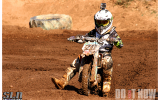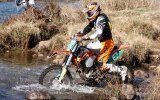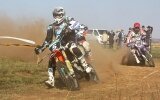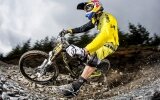- Magazine
- #readityourway
- Weekly Stories
- #shareyourstory
-
Adventure
- Abroad Travelling
- Africa Travelling
- Events
- Expos & Shows
- Festivals
- Fishing
- Free Diving
- Gliding
- Horse Riding
- Inspiring People
- Islands Travelling
- Kite/Windsurfing
- Motorbiking
- Motorised Water Sports
- Mountaineering
- Mountain Biking
- Off-road 4x4
- Off-road Motorbiking
- Paddling
- Performance Driving
- Photography
- Rock Climbing
- Rollerblading
- Sailing
- Scuba Diving
- Skateboarding
- Skydiving
- Snowboarding & Skiing
- Surfing
- Swimming
- Trail Running
- Wakeboarding
- Waveski Surfing
-
Sport
- Adventure Racing
- Fishing
- Free Diving
- Gliding
- Health & Fitness
- Horse Riding
- Inspiring People
- Kite/Windsurfing
- MMA
- Motorbiking
- Mountain Biking
- Multi-sport
- Off-road 4x4
- Off-road Motorbiking
- Paddling
- Performance Driving
- Photography
- Road Cycling
- Road Running
- Rock Climbing
- Rollerblading
- Sailing
- Scuba Diving
- Skateboarding
- Skydiving
- Snowboarding & Skiing
- Surfing
- Swimming
- Rugby
- Trail Running
- Triathlon
- Wakeboarding
- Waveski Surfing
- Lifestyle
- Calendar
Bumper Enduro & Cross-Country
Words: James Dyer | Photos: Bank Windhoek Media Department
Category:
Off-road Motorbiking
Enduro or off-road motorcycling and quad racing has shown good growth over recent years and this was seen at the fourth round of the Bank Windhoek Namibian National Enduro Series 2013, co-sponsored by Xtreme Quads, CRP and Prothatch Namibia. Held on Saturday, 8 June 2013, the event took place in Uis, Namibia, a small mining town located some distance inland in Damaraland and forms part of the Erongo region.
This area is popular with riders and was used last year by some of the SADC entries to the 2013 Dakar to train in. It is also regularly used by bike tour operators to show visitors this beautiful area.
Being a Fédération Internationale de Motocyclisme (FIM) Africa Cross Country Challenge and Southern Off Road Challenge (SORC) event, there were several top names from South Africa (15 riders), Zambia (7 riders), Namibia (19 riders), Zimbabwe (3), and Kenya (2) competing in the various categories: B1 class, B2 class, B3 Quad class, and the B9 Ladies Quads class. The B1 class is for bikes up to 200 cc two stroke and 250 cc four stroke. The B2 class is for open bikes with a displacement of 201 cc two stroke upwards and 251 cc upward four stroke. B3 is quad bikes with a 750 cc capacity limitation. The B9 class is the ladies quads, and they do the same distance as the men.
The 200 km race for quads consisted of five laps of 40 km, and the 185 km race for the bikes consisted of five laps of
37 km, which weaved in and around the town and through some of the condemned areas that featured great obstacles, like abandoned buildings, old mines, and dumps. The rocks and soft sand greatly added to the difficulty of this challenge. With the service area on the hill, spectators were able to see most of the track.
Saturday started off with an early morning rider’s briefing, which was followed by the first bike going off at 10 a.m. The bikes and quads then split up as their routes took them to different sections, with the bikes heading into the abandoned houses.
The first staircase caused some difficulty for the riders, but it was great entertainment for the spectators. Very few riders made it up in one go and once at the top, they were routed through some more ruins. From there, the bikes and quads joined up once again to share a section of route that crossed over the main road, down and along the river bed, and up and over a few rocky uphills before heading back to complete the balance of the lap.
The second part of the route, for the bikes, had some serious uphill climbs in the dunes and a boulder section that served to separate the men from the boys. Then just before the end, there was a section of about 400 m that took most riders seven or eight minutes to complete. This was due to the difficulty and size of the boulders, which resulted in the riders having to pick the right lines and wrestle the bikes through some of the sections. The overall mix of terrain was good, with some challenging thick sand and rocky sections that kept the riders totally focused and with no time to relax.
With the FIM Africa rules not giving the ladies the option of a shorter distance, as they usually do, the ladies must be congratulated on the great courage and determination they showed in getting to the finish line.
In the end it was South African rider Marc Torlage who proved to be the fastest man on the day and completed the five laps, of 37 km each, in a time of 4:44:15 to clinch the B1 and overall title. The fastest Quad was Namibian Fanie Steenkamp who completed the five laps of 42 km in 5:02:13. In the Ladies Quads it was Namibian Julia Moths who completed her five laps of 42 km in 5:43:19.
In the Team Challenge, Namibia narrowly beat South Africa by 3 points for the win.
Country results were as follows:
Namibia on 127 points
South Africa on 124 points
Zambia on 36 points
Kenya on 15 points
Zimbabwe on 5 points
Related content
|
|
|
|
|
|
|
|
|
|







